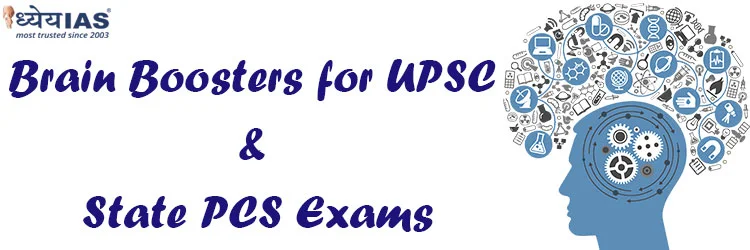Current Affairs Brain Booster for UPSC & State PCS Examination
Topic: UNICEF’s Report on Lead Poisoning

Why in News?
- A joint report ‘The Toxic Truth: Children’s Exposure to Lead Pollution Undermines a Generation of Potential’ by United Nations Children’s Fund (UNICEF) and Pure Earth, a non-profit organisation notes that lead is a potent neurotoxin that causes irreparable harm to children’s brains.
Key Highlights
- 1 in 3 children – up to approximately 800 million globally – have blood lead levels at or above 5 micrograms per decilitre (μg/dL).
- Most of these children impacted by lead live in Africa and Asia, but many are also affected in Central and South America and Eastern Europe. While blood lead levels have declined dramatically in high-income countries since the phase-out of leaded gasoline and in some places lead-based paint, blood lead levels for children and adults in low- and middle-income countries and in pockets in high-income countries continue to be dangerously high.
- The impact of lead on adults is so large that over 900,000 premature deaths per year are attributed to lead exposure.
- One of the most concerning sources of lead exposure is the unsound recycling of used lead-acid batteries (ULABs), most of which are found in cars, trucks and other vehicles.
- Juvenile delinquency, violence and crime have been associated with preschool lead exposure.
- Many countries lack sufficient formal recycling infrastructure and capacity to handle the quantity of used lead-acid batteries flooding their markets.
- Sources of Lead Exposure
- Lead-acid Batteries
- Spices, Cosmetics and Toys
- Ceramics and Cookware
- Lead-based Paint and Pigments
- Leaded Gasoline
- Lead in Soil
- Lead in Water
- Electronic Waste
- Occupational Exposure
Lead Poisoning
- As there is no cure for lead poisoning, identifying local sources is a very important part of preventing exposure.
- Lead is a potent neurotoxin that, with even low-level lead exposure, is associated with a reduction in IQ scores, shortened attention spans, and potentially violent - and even criminal - behaviour later in life.
- Babies and children under five are at high risk, because their brains can be damaged even before they get to fully develop, leading to lifelong neurological, cognitive and physical impairment.
- Older children have higher risk of kidney damage and cardiovascular diseases.
- India has the largest number - more than 275 million children - with blood lead levels of more than five micrograms per decilitre.
- Children living at or near lead acid battery recycling workshops in India, have been found to have lead levels up to 190 micrograms per decilitre.
Key Recommendations
- Monitoring and reporting systems including building capacity for blood lead level testing.
- Prevention and control measures including preventing children’s exposure to high-risk sites and products that contain lead, such as certain ceramics, paints, toys, and spices.
- Management, treatment, and remediation including strengthening health systems so that they are equipped to detect, monitor and treat lead exposure among children; and providing children with enhanced educational interventions and cognitive behavioural therapy to better manage the negative effects of lead exposure.
- Public awareness and behaviour change including creating continual public education campaigns about the dangers and sources of lead exposure with direct appeals to parents, schools, community leaders, and healthcare workers.
- Legislation and policy including developing, implementing, and enforcing environmental, health and safety standards for manufacturing and recycling of lead acid batteries and e-waste, and enforcing environmental and air-quality regulations for smelting operations.
- Global and regional action including creating global standard units of measure to verify the results of pollution intervention on public health, the environment, and local economies; building an international registry of anonymized results of blood lead level studies; and creating international standards and norms around recycling and transportation of used lead acid batteries.









